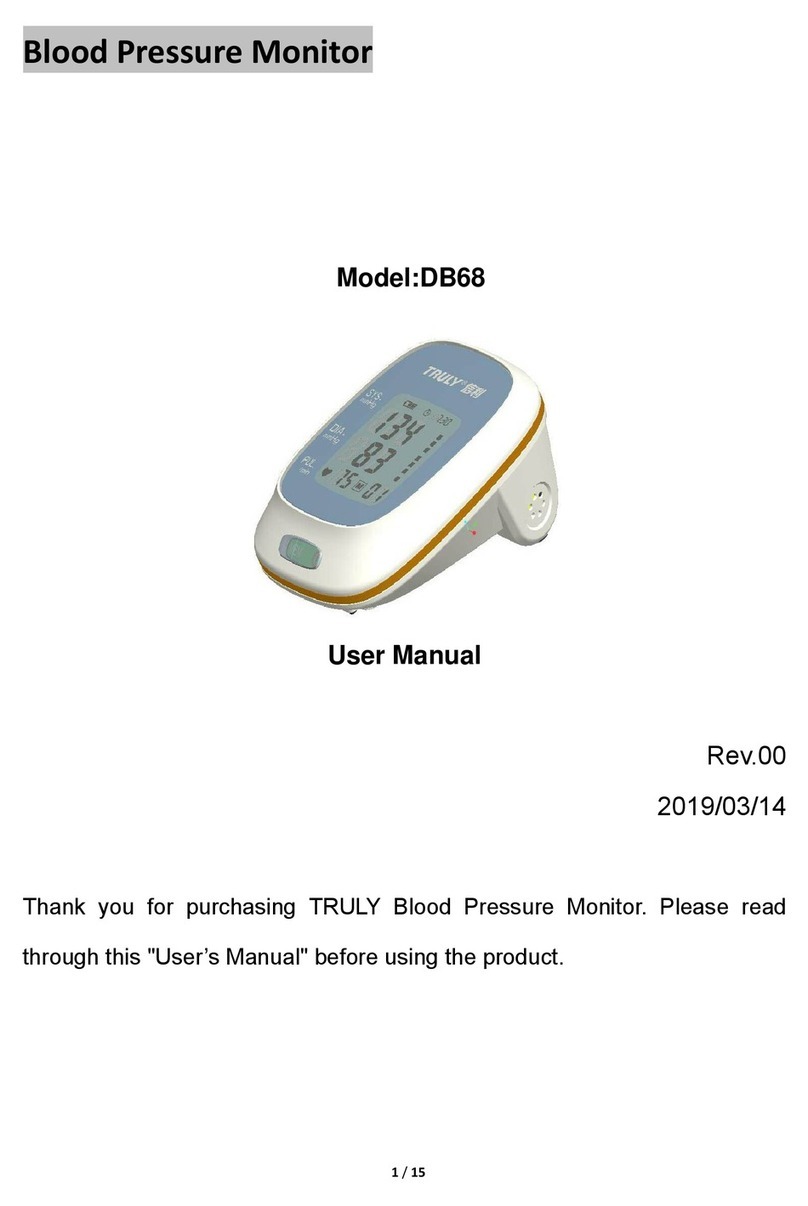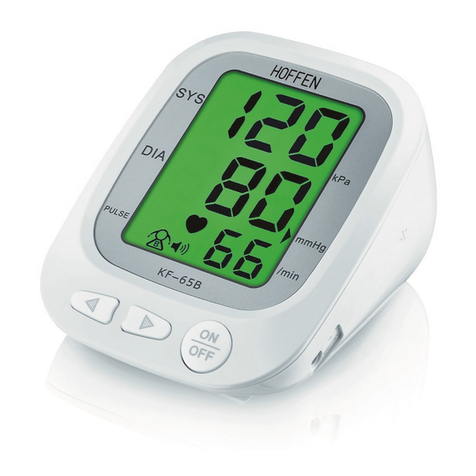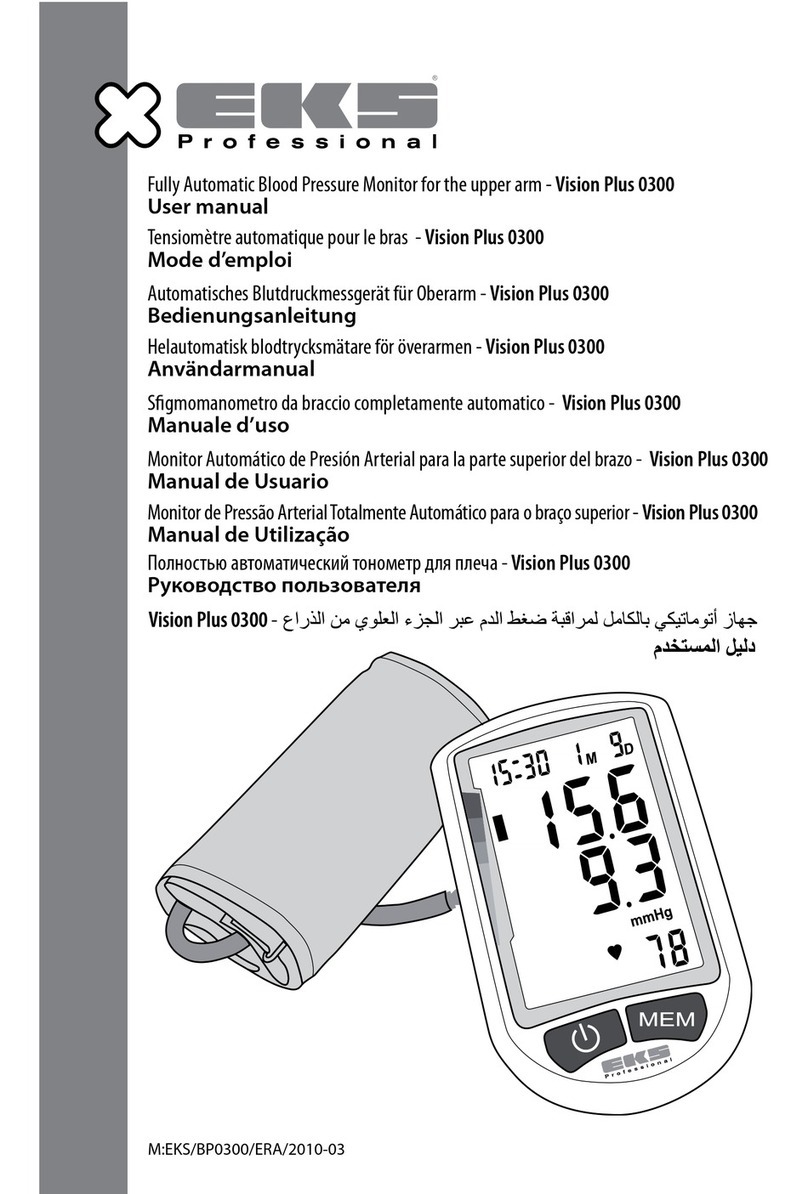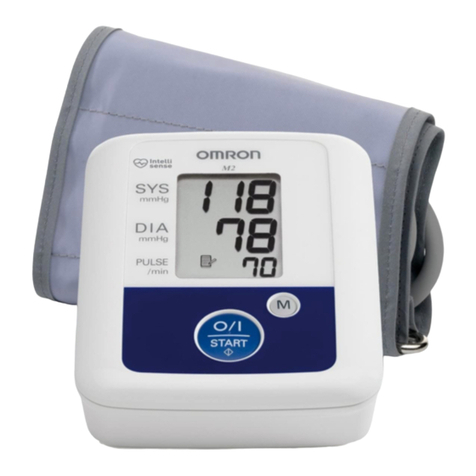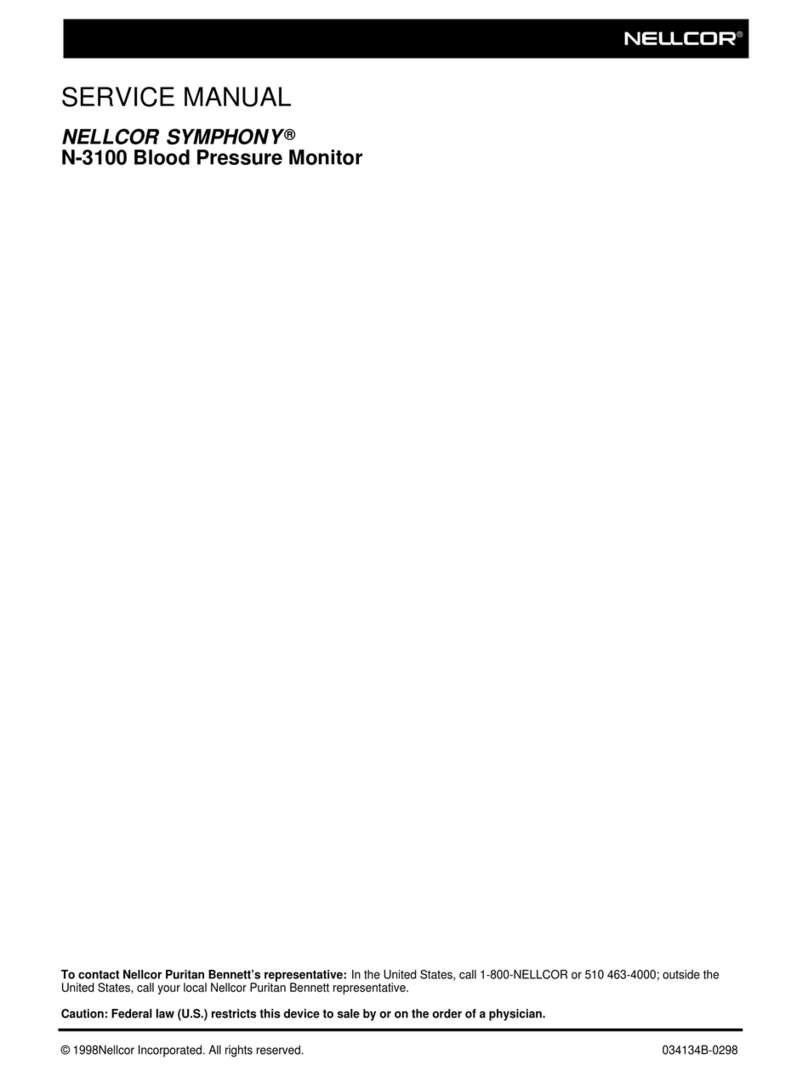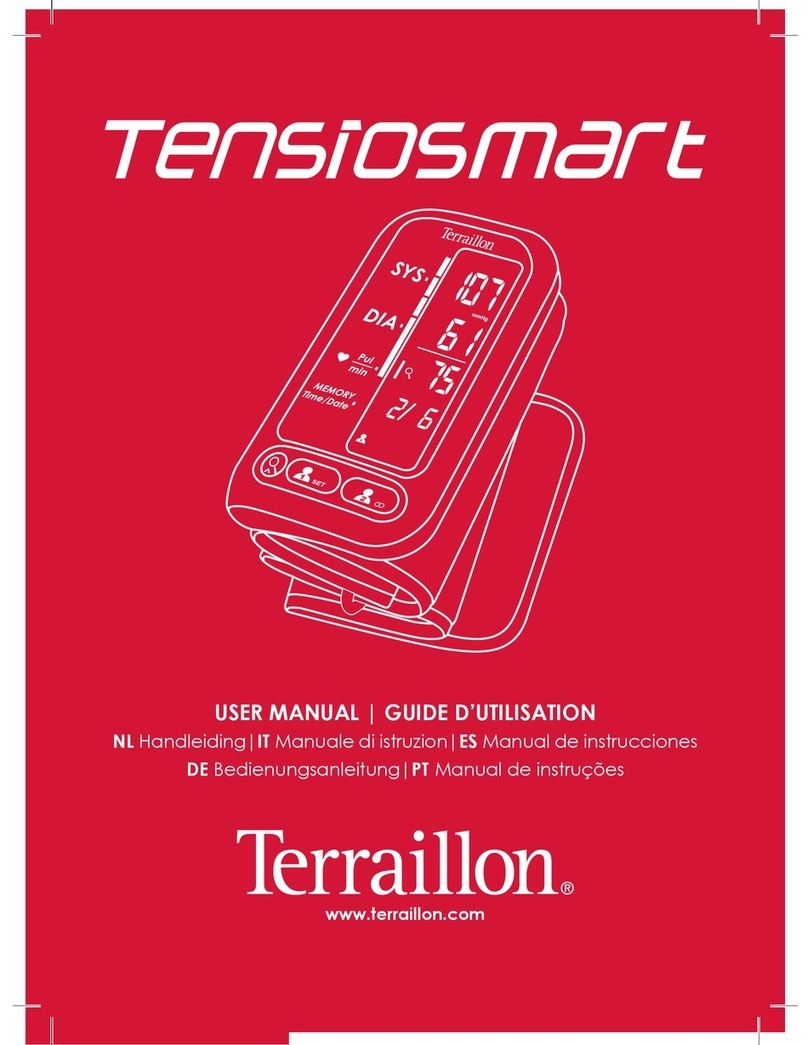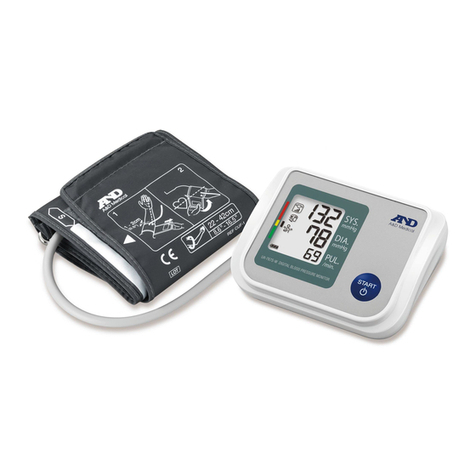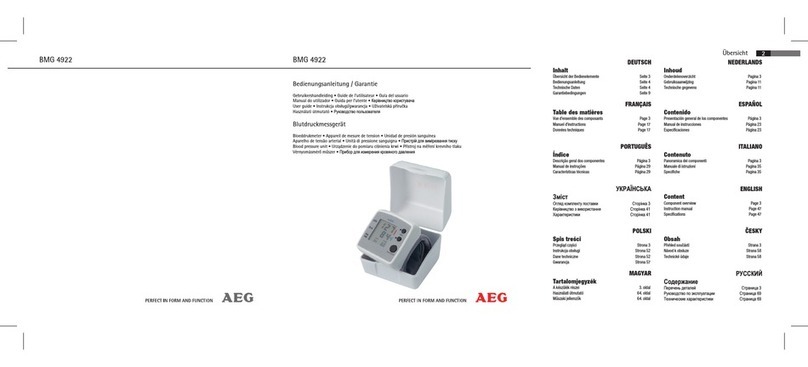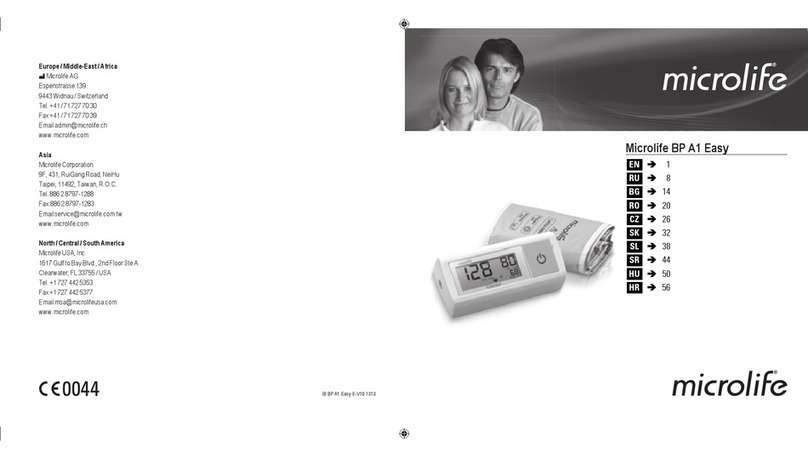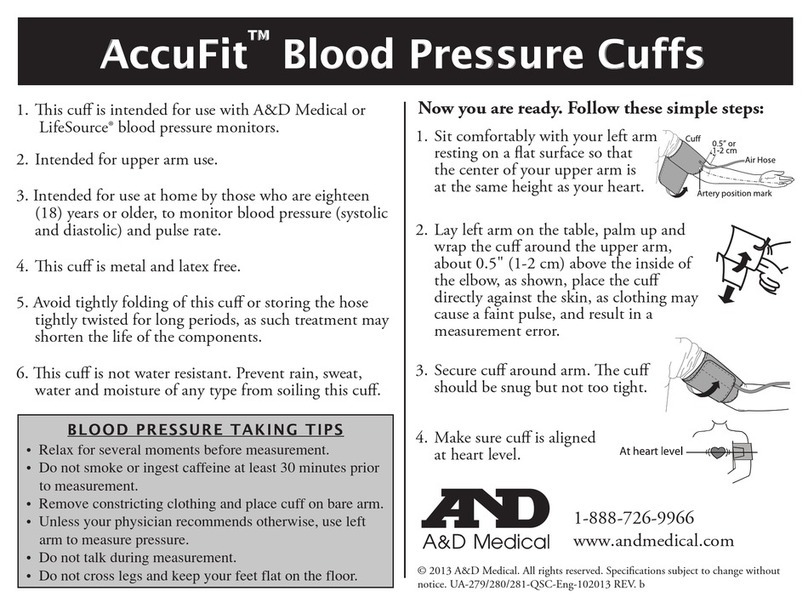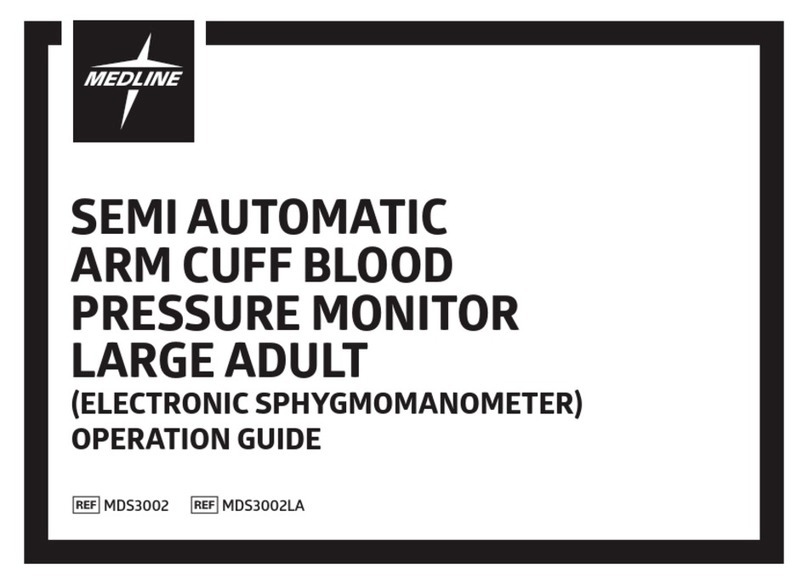BLUE STONE 80-5103 User manual

Contents
Safety Notice ............................................................... 02
Unit Illustration
Important Testing Guidelines
Quick Start ................................................................. 10
Blood Pressure Information
Blood Pressure Q&A
Maintenance
Specifications
......................................................... 06
..................................... 09
Unit Operation ........................................................... 12
........................................ 26
................................................... 30
............................................................... 32
............................................................. 36
Limited Warranty ......................................................... 41
Battery Installation .................................................. 12
System Settings ........................................................ 13
Applying The Wrist Monitor .................................... 15
Testing ..................................................................... 17
Power Off ................................................................. 21
Memory Check ........................................................ 22
Memory Deletion ..................................................... 23
Low Battery Indicator ............................................. 24
Troubleshooting ...................................................... 25
Safety Notice
Safety NoticeSafety Notice
Owner's Manual
Automatic Wrist
Digital Blood Pressure Monitor
Model 80-5103
1
3
2
4
Wrist Type
Thank you for purchasing the 80-5103 Blood Pressure Monitor.
The unit has been constructed using reliable circuitry and
durable materials. Used properly, this unit will provide years
of satisfactory use.
7.To avoid any possibility of accidental strangulation, keep this
unit away from children and do not drape tubing around your
neck.
8.Ensure that children do not use the instrument unsupervised;
some parts are small enough to be swallowed.
9.Some may get a skin irritation from the cuff taking frequent
readings over the course of the day, but this irritation typically
goes away on its own after the monitor is removed.
The device is intended for used by adults with 12 years and older
to measure the systolic and diastolic blood pressure and pulse
rate. All values can be read out in one LCD DISPLAY.
Measurement position is on adult upper arm only.
Blood pressure measurement determined with this device are
equivalent to those obtained by a trained observer using the
cuff/ stethoscope auscultation method, within the limits
prescribed by the American National Standard (ANSI/AAMI
Sp10) for electronic sphygmomanometers.
Precautions to Ensure Safe, Reliable Operation
1. Do not drop the unit. Protect it from sudden jars or shocks.
2. Do not insert foreign objects into any openings.
3. Do not attempt to disassemble the unit.
4. Do not crush the pressure cuff.
5. If the unit has been stored at temperatures below 0 oC, leave it
in a warm place for about 15 minutes before using it.
Otherwise, the cuff may not inflate properly.
6. Do not store the unit in direct sunlight, high humidity or dust.
Document No. DBP-2504-003
Important Instructions Before Use
1. Do not confuse self-monitoring with self-diagnosis.
Blood pressure measurements should only be interpreted by a
health professional who is familiar with your medical history.
2. Contact your physician if test results regularly indicate
abnormal readings.
3. If you are taking medication, consult with your physician to
determine the most appropriate time to measure your blood
pressure. NEVER change a prescribed medication without first
consulting with your physician.
4. Individuals with serious circulation problems may experience
discomfort. Consult your physician prior to use.
5. For persons with irregular or unstable circulation resulting
from diabetes, liver disease, arteriosclerosis or other medical
conditions, there may be variations in blood pressure values
measured at the wrist versus at the upper arm. Monitoring the
trends in your blood pressure taken at either the arm or the wrist
is nevertheless useful and important.
6. People suffering from vascular constriction, liver disorders or
diabetes, people with cardiac pacemakers or a weak pulse, and
women who are pregnant should consult their physician before
measuring their blood pressure themselves. Different values
may be obtained due to their condition.
7. People suffering from arrhythmias such as atrial or ventricular
premature beats or atrial fibrillation only use this blood pressure
monitor in consultation with your doctor. In certain cases
oscillometric measurement method can produce incorrect
readings.
8.Too frequent measurements can cause injury to the patient due to
blood flow interference.
9.The cuff should not be applied over a wound as this can cause
further injury.
10.DO NOT attach the cuff to a limb being used for IV infusions or
any other intravascular access, therapy or an arterio-venous (A-
V) shunt. The cuff inflation can temporarily block blood flow,
potentially causing harm to the patient.
11.The cuff should not be placed on the arm on the side of a
mastectomy. In the case of a double mastectomy use the side of
the least dominant arm.
12.Pressurization of the cuff can temporarily cause loss of function
of simultaneously used monitoring equipment on the same limb.
13.A compressed or kinked connection hose may cause continuous
cuff pressure resulting in blood flow interference and potentially
harmful injury to the patient.
14.Check that operation of the unit does not result in prolonged
impairment of the circulation of the patient.
Version: Z
Date of Issue: 2012.11
Manufactured for:
Trademark Global LLC
Lorain, OH 44053
Made in China

M
M
Unit Illustration
Unit Illustration
Unit Illustration
Unit Illustration
Pulse Rate
LCD
" " Button
" M " Button
Display
Wrist Cuff
5
7
9 10
6
8
Important Testing Guidelines
1. Avoid eating, exercising, and bathing for 30 minutes prior to
testing.
2
. Try to measure your blood pressure at the same time each day
for consistency.
8
Any blood pressure recording can be affected by the following
factors:
1. The position of the subject, his or her physiologic condition;
2. The performance and accuracy of the device;
3. Cuff size: too small cuff (bladder) will produce a higher blood
pressure value than usual, too big cuff (bladder) will produce a
lower blood pressure value;
4. Measuring position does not keep level with your heart;
5. Speaking or moving body parts while testing;
6. Not relaxing for about 5 minutes before taking the measurement.
. Sit in a calm environment for at least 5 minutes prior to testing.
3. Do not stand while testing. Sit in a relaxed position while
keeping your wrist level with your heart.
4. Avoid speaking or moving body parts while testing.
5. While testing, avoid strong electromagnetic interference such
as microwave ovens and cell phones.
6. Wait 3 minutes or longer before re-testing.
7
. Test comparisons should only be made when monitor is used
on the same wrist, in the same position, and at the same time of
day.
9. This blood pressure monitor is not recommended for people
with severe arrhythmia.
Quick Start
1. Install batteries. (See Figure A )
2 . . Remove clothing from the wrist area (See Figure B)
3. Rest for several minutes prior to testing. Wrap cuff around
left wrist (See Figure C).
3.Plastic Storage Case
World Health Organization (WHO)
Blood Pressure Classification Indicator
Monitor Unit
Systolic Blood Pressure
mmHg kPa
No
M
D
Time
Date Pulse
Rate
Low Battery Indicator
WHO Blood Pressure
Classification Indicator
Systolic
Blood
Pressure
Diastolic
Blood
Pressure
Diastolic Blood Pressure
2.Owner's Manual
Contents
Figure B
Figure A
1.Monitor Unit
15. Product is designed for its intended use only. Do not misuse in
any way.
16. Product is not intended for infants or individuals who cannot
express their intentions.
17. Any hazards associated with prolonged overinflation of the
bladder.
18. Do not disassemble the unit or arm cuff. Do not attempt to repair.
19. Use only the approved arm cuff for this unit. Use of other arm
cuffs may result in incorrect measurement results.
20. The system might produce incorrect readings if stored or used
outside the manufacturer's specified temperature and humidity
ranges.
21. Do not use cell phones and other devices, which generate strong
electrical or electromagnetic fields, near the device, as they may
cause incorrect readings and interference or become interference
source to the device.
22. Do not mix new and old batteries simultaneously
23. Replace batteries when Low Battery Indicator“ ” appears
on screen. Replace both batteries at the same time.
24. Do not mix battery types. Long-life alkaline batteries are
recommended.
25. Remove batteries from device when not in operation for more
than 3 months.
26. Do not insert the batteries with their polarities incorrectly
aligned.
27. Dispose batteries properly; observe local laws and regulations.
28. Refer to instruction manual/ booklet symbol.
M
1-2cm ''(0.4-0.8)
Figure C
M
Owner's Manual
Automatic Wrist
Digital Blood Press ure Monitor
Mod el 80-5103
Wris t Type

1-2cm ''(0.4-0.8 )
M
Unit Operation
Unit Operation
Unit Operation
Battery Installation
1. Time /Date Setting
With power off ,Press " " button 3 seconds to set the Time/Date
mode. Set the month first by adjusting the "M " button. Press
“ " button again to confirm current month.
Continue setting the day, hour and minute in the same way.
Every time the " " button is pressed, it will
lock in your selection and continue in succession (month, day,
hour, minute.)
11
13
12
14
2. Save Settings
While in any setting mode, press " " button to
turn the unit off. All information will be saved.
about 3seconds
Slide battery cover off as indicated by arrow.
Install 2 new AAA alkaline batteries according to polarity.
Close battery cover.
Note:
1) " "
2) Batteries should be removed from device when not in
operation for an extended period of time.
Replace batteries when Low Battery Indicator
appears on screen.
Applying The Wrist Monitor
Do not apply over clothing. If wearing a long sleeved shirt,
be sure to roll sleeve back to forearm.
Apply monitor to wrist as illustrated. Tighten cuff firmly as
not to wiggle.
Note: Unit will automatically save all information and shut off
if left it for 3 minutes.
Unit Operation 15
M
D
Quick Start
4. Sit in a comfortable position and place wrist level with heart.
(See Figure D)
5. Press button to start testing. (See Figure E) " "
Figure EFigure D
Unit Operation 16
Do not stand while testing. Sit in a comfortable position and
place wrist level with heart.
M
M

mmHg kPa
No
M
D
mmHg
M
D
Unit Operation
Unit Operation
Unit Operation
Unit Operation
17
19
18
20
Testing
1. Power On
" "
The LCD screen will appear for one second as unit performs
a quick diagnosis. A long tone indicates device is ready for
testing.
Press and hold button until a beep sounds.
Note: Unit will not function if residual air from previous
testing is present in cuff. The LCD will flash " "
until pressure is stabilized.
2.
Initial pressure is first pumped to 190mmHg. If the current
user's systolic blood pressure is over 190mmHg, the unit
will automatically re-inflate to the proper shelf.
Pressurization
Note: Pressurization will gradually subside and ultimately
stop when cuff is not properly applied to the wrist.
If this occurs, pressing the button to
turn the unit off.
" "
3. Testing
After cuff inflation, air will slowly subside as indicated by the
corresponding cuff pressure value. A flashing " " will
appear simultaneously on screen signaling heart beat detection.
Note: Remain relaxed during testing. Avoid speaking or
moving body parts.
4. Result Display
Three short beeps sound when testing is complete.
The screen will display measurements for systolic and
diastolic blood pressure. An indicator representing
the current measurement will appear next to the
corresponding WHO Classification.
Indicator
Note: Refer to Page 30~31 for detail WHO Blood Pressure
Classification Information.
mmHg
M
D
mmHg
mmHg
M
D
Unit Operation Unit Operation 2221
Memory Check
With power off, you may check past test results by using the
" M" button.
Upon activating test results, you can press the "M "button
to scroll through all test results stored in memory. The LCD will
display the last memory as NO reading.measurement
Power Off
The " " button can be pressed to turn off the unit
in any mode.
The unit can turn off the power itself about 3 minutes no
operation in any mode.
Safety Precaution: If pressure in cuff becomes too extreme
while testing, press the " " button to turn
power off.
The cuff pressure will rapidly dissipate once the unit is off.
No
M
D
mmHg
M
D

Unit Operation
Low Battery Indicator
4 short warning beeps sound when battery life is depleting and
unable to inflate cuff for testing. The " " appears
simultaneously for approximately 5 seconds prior to shutting
down. No memory loss will occur
throughout this process.
Replace batteries at this time.
24
Unit Operation Unit Operation
23
Memory Deletion
Memory may be deleted while in Memory Check mode. Press and
hold the " " button for approximately 3 seconds to delete all
memory records . The monitor will beep indicating successful
deletion and then transfer into testing mode. Then press
the " " button to turn the unit off.
Note: Memory cannot be recovered once it has been deleted.
mmHg
M
D
Blood Pressure Information 27
WHO Blood Pressure Classification Indicator
The 80-5103 is equipped with a classification indicator based
on established guidelines from the World Health Organization.
The chart below (color coded on monitor unit) indicates test
results.
Severe Hypert ens ion
Moderate Hype rte nsion
Mild Hyperten sio n
High-n
Optimal
ormal
Normal
: Classification IndicatorBlood Pressure
Mild Hypertension
25
Unit Operation
Troubleshooting
Problem Possible Cause Solution
Blood pressure
results are not
within typical
range
Cuff is too tight or not
properly positioned on
the wrist
Inaccurate test results
due to body movement
or monitor movement
Firmly reposition cuff
on wrist making sure no
wiggle is present.
( See Page 15)
Sit in a relaxed position
placing wrist level with
heart. Avoid speaking or
moving body parts while
testing. ( See Page 8)
Cuff fails to inflate
properly
Make sure hose is
properly fastened to
cuff and monitor unit
Improper operation Read user manual
carefully and
re-test properly.
Read user manual
carefully and
re-test properly.
Pressurization is over
300mmHg
" "
displayed
Blood Pressure Information
Blood Pressure
Blood pressure is the force of blood pushing against the walls
of arteries. It is typically measured in millimeters of mercury
(mmHg.) Systolic blood pressure is the maximum force exerted
against blood vessel walls each time the heart beats. Diastolic
blood pressure is the force exerted on blood vessels when the
heart is resting between beats.
An individual's blood pressure frequently changes throughout
the course of a day. Excitement and tension can cause blood
pressure to rise, while drinking alcohol and bathing can lower
blood pressure. Certain hormones like adrenaline (which your
body releases under stress) can cause blood vessels to constrict,
leading to a rise in blood pressure.
If these measuring numbers become too high, it means the heart
is working harder than it should.
mmHg
200
150
100
50
6 1 2 1 8 2 4
Upper curve : systolic blood pressure
Lower curve: diastolic blood pressure
Example: fluctuation within a day (male, 35 years old)
Time of day
26
Blood Pressure Information 28
Health Reminder
Hypertension is a dangerous disease that can affect the quality
of life. It can lead to a lot of problems including heart failure,
kidney failure, and cerebral hemorrhaging. By maintaining a
healthy lifestyle and visiting your physician on a regular basis,
hypertension and relative diseases are much easier to control
when diagnosed in the early stages.
Severe Hypertension
Moderate Hypertension
Mild Hypertension
High-normal
Normal
180
160
140
130
120
80 85 90 100 110 Diastolic
( mmHg )
Systolic
( mmHg )
Optimal
Table of contents
Other BLUE STONE Blood Pressure Monitor manuals


